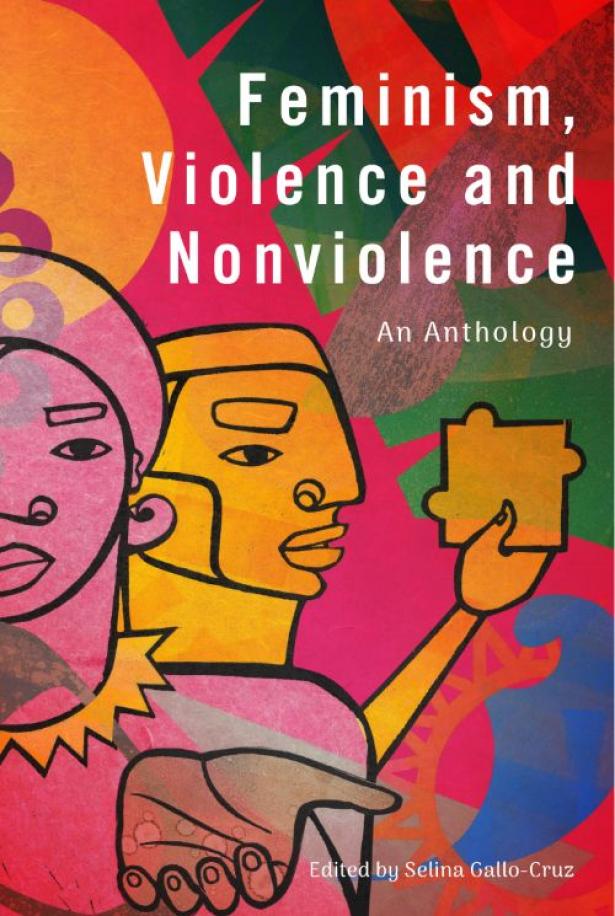Feminism, Violence and Nonviolence: An Anthology
Edited by Selina Gallo-Cruz
Edinburgh University Press
ISBN: 9781399526036
During the 1970s and 1980s, many feminists pushed the armed forces to allow women to serve in combat. Many also organized to demand that police forces diversify and bring more women and people of color into their ranks. But this segment of the women’s movement did not represent everyone. A smaller but hugely vocal constituency opposed violence, militarism, police expansion and colonialism, and argued that an equal opportunity to maim or kill would do nothing to create the equitable societies they sought to build.
Unfortunately, their efforts often get short shrift in historical accounts of the era. The anthology, Feminism, Violence and Nonviolence zeroes in on the influence of pacifist thought on Second Wave feminism. The book highlights the many intersections between war, interpersonal violence and women’s oppression.
It’s a valuable collection. Nonetheless, because the essays were written between the early 1970s and the late 1990s— and the book does not create a bridge to contemporary feminist, peace, and social justice efforts— it will largely serve as a resource for historians, researchers, and scholars.
The anthology offers an expansive view of violence. As the late Barbara Deming, a writer active in the War Resisters League and World Peace Brigade for Nonviolent Action, noted in a 1971 essay called On Anger: “Bullets and bombs are not the only means by which people are killed. If a society denies certain of its members food or medical attention, or a political voice, the sense of their own worth, the freedom to exercise their talents, this too is waging war of a kind.”
Indeed.
Native American sociologist Winona LaDuke, executive director of Honor the Earth, offers a stark illustration of this, writing that radiation has contaminated Native lands and waterways contributing to an astronomical spike in cancer among the Acoma, Laguna, and Navajo peoples. In Red Lands and Uranium Mines, written in 1981, she reports that: “One-half of all United States uranium resources and one-third of all Western low-sulfur coal lie under Indian lands. To the Bureau of Indian Affairs and organizations such as the Council of Energy Resource Tribes, these resources are seen as the ladder to economic development of impoverished reservations…A contingent of Indians, however, believe that the resources should be left in the ground.”
Eco-feminist Vandana Shiva agrees with LaDuke but goes further, arguing that ecological devastation is explicitly tied to corporate greed and unfettered global capitalism. She calls on us to oppose both. In excerpts from 1988’s Staying Alive: Women, Ecology and Development, she stresses that “While gender subordination and patriarchy are the oldest of oppressions, they have taken on new and more violent forms through the project of development…Development projects appropriated or destroyed the natural resource base for the production of sustenance and survival…The destruction of ecologically sound traditional technologies, often created and used by women, along with the destruction of their material base, is generally believed to be responsible for the feminization of poverty in societies which have had to bear the costs of resource destruction.”
And it has only gotten more dire in the 36 years since these words were written.
This reality underscores Feminism, Violence and Nonviolence and reinforces its potent intersectional and international focus. Nonetheless, some of the 47 essays, especially those debating the efficacy of fighting back against a rapist, are dated. Similarly advice about staying safe while walking alone after dark, penned before cell phones became ubiquitous, needs to be updated.
Editor Selina Gallo-Cruz acknowledges these limitations but stresses that the book captures “a pivotal historical moment during which activists questioned how nonviolence might be applied to effectively transform violent systems of aggression, from rape to war.” The words of feminist luminaries–among them Charlotte Bunch, Andrea Dworkin, Audre Lorde, Pam McAllister, and Adrienne Rich–provide an important grounding in pro-peace tactics and strategies. What’s more, by tracing the ways misogyny is learned, internalized, and transmitted, Feminism, Violence and Nonviolence challenges patriarchal domination and highlights the ongoing impact that racism, sexism, colonialism, displacement, interpersonal violence, and war continue to play in the lives of women and their loved ones.
The Indypendent is a New York City-based newspaper, website and weekly radio show. All of our work is made possible by readers like you. During this holiday season, please consider making a recurring or one-time donation today or subscribe to our monthly print edition and get every copy sent straight to your home.


Spread the word